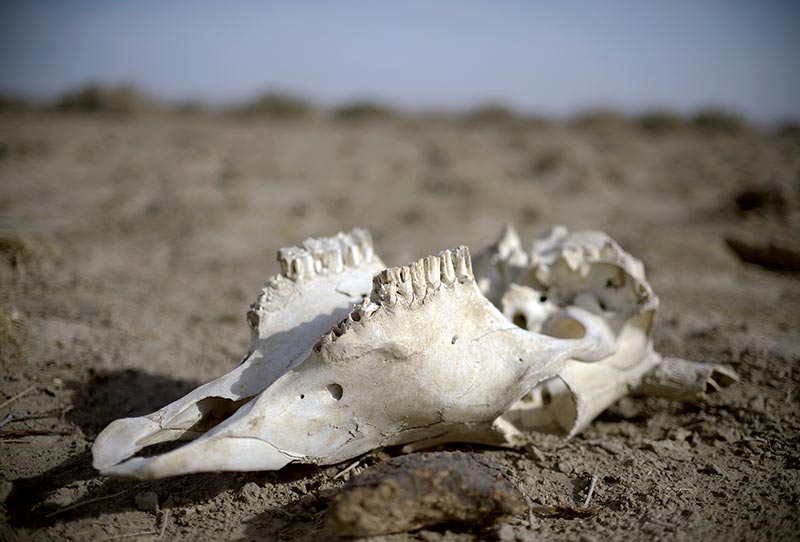
Making it rain

Navajo Times | Donovan Quintero A bleached horse skull lies on the sand of the Navajo Nation. Climatologists say the Nation is in a "megadrought" that started in 1996.
Drought has been building for centuries, and the government hasn’t helped

Navajo Times | Donovan Quintero
A bleached horse skull lies on the sand of the Navajo Nation. Climatologists say the Nation is in a “megadrought” that started in 1996.
WINDOW ROCK
Centuries of droughts, lasting for decades at a time — including the human-induced megadrought currently engulfing the Navajo Nation – combined with a U.S. government policy enacted long before the Treaty of 1868, have taken their toll on the traditional Diné way of living.
The megadrought, which climatologists say began in 1996, is a continuing climatic tradition of devastation that wiped out the Anasazi in 1350 and wiped out thousands of farmers in the Midwest in 1934.
While scientists have studied tree rings and ancient coral in the oceans to get a better understanding of what the weather was like in Diné country for the last 1,000 years, Diné have prayed about and stood by the teaching “water is sacred.”
That is what Elmer Begay and Bob “Navajo Bob” Sandoval say.
Begay, an executive staff assistant with the Begaye-Nez administration, and Sandoval, a hatałii and a deejay at KTNN, say science will not make rain. Only by adhering to Diné beliefs, through prayer and ceremonies, will rain come.
“We used to make offerings and we regularly performed ceremonies,” Begay said. “The way they used it, they built a fire and they put water there. Then right where the medicine man sits they put a woven rug with sheep wool and they put herbs and precious stones there and would ride on their horses to a sacred place, do their offering and ride back. That’s how it was done.”
The idea of going to the chapter house or Window Rock during a rainless season was not the first priority many years ago. They just knew which ceremonies needed to be done, Begay added.
To read the full article, pick up your copy of the Navajo Times at your nearest newsstand Thursday mornings!
Are you a digital subscriber? Read the most recent three weeks of stories by logging in to your online account.








 Highway 264,
Highway 264, I-40, WB @ Winslow
I-40, WB @ Winslow